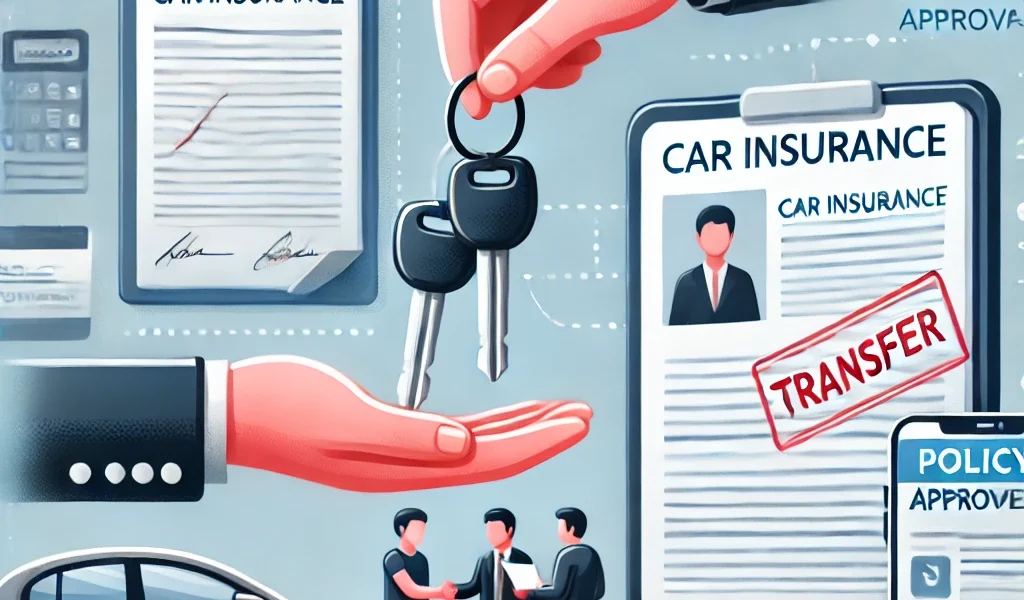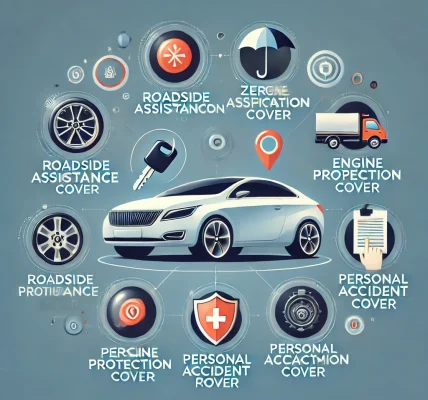When buying or selling a car, one crucial step that often gets overlooked is transferring car insurance. Whether you’re purchasing a new vehicle or selling your old one, ensuring a seamless insurance transfer is essential to stay compliant with legal requirements and avoid potential financial risks.
In this guide, we’ll cover everything you need to know about transferring car insurance, including the process, key considerations, and tips to make it hassle-free.
Why is Transferring Car Insurance Important?
Car insurance is legally required in most countries and helps protect vehicle owners against financial liabilities arising from accidents, damages, or theft. Transferring your insurance ensures that:
✔ The new owner has valid coverage from the moment they take possession of the car. ✔ You, as the seller, are not held liable for any future incidents involving the vehicle. ✔ The buyer does not have to start a new policy from scratch, potentially saving time and money. ✔ There is no lapse in coverage, which could lead to fines or penalties.
Steps to Transfer Car Insurance When Selling a Vehicle
If you’re selling your car, you need to ensure that the insurance policy is properly transferred to the buyer. Here’s how to do it:
1. Notify Your Insurance Provider
As soon as you decide to sell your car, inform your insurance company about the sale. This helps initiate the transfer process and prevents future complications.
2. Gather Necessary Documents
To transfer the insurance policy to the new owner, you will typically need the following documents:
- Copy of the original insurance policy
- Sale agreement or proof of vehicle transfer
- Copy of the Vehicle Registration Certificate (RC)
- No-Objection Certificate (NOC) from the previous policyholder (seller)
- KYC documents of the new owner (ID proof, address proof, etc.)
- Vehicle inspection report (if required by the insurer)
3. Submit a Transfer Request to the Insurer
The buyer must submit a request to the insurance provider to transfer the policy into their name. This can typically be done online, via email, or by visiting the insurer’s office.
4. Pay the Required Fees
Most insurance companies charge a nominal transfer fee. The buyer must pay this fee to complete the transfer process.
5. Get a Confirmation of Transfer
Once the insurer approves the transfer, they will issue a revised insurance policy in the name of the new owner. Make sure to obtain a copy of the updated policy document.
Important Note: Until the transfer is officially complete, the previous owner (seller) remains responsible for any liabilities associated with the vehicle.
Steps to Transfer Car Insurance When Buying a Vehicle
If you’re buying a car, it’s crucial to ensure that the insurance is transferred to your name as soon as the purchase is finalized. Here’s what you need to do:
1. Check the Existing Insurance Policy
Before finalizing the purchase, ask the seller for details about the existing car insurance policy. Verify whether the policy is active and covers the required risks.
2. Request a Policy Transfer
Once the ownership transfer is completed, submit a request to the insurance company to transfer the policy to your name.
3. Submit the Required Documents
You will need to provide:
- Vehicle Registration Certificate (RC) with the updated owner’s name
- Previous owner’s insurance policy
- Sale agreement
- KYC documents (ID proof, address proof, etc.)
- No-Objection Certificate (NOC) from the previous owner
4. Pay the Transfer Fees
Insurance companies may charge a small fee for processing the transfer. Make sure to pay it to avoid delays.
5. Get the Updated Policy Document
Once the transfer is complete, the insurer will issue a new policy document in your name. Keep a copy for your records.
What If the Buyer Wants a New Insurance Policy?
Instead of transferring the existing policy, the buyer may prefer to get a new insurance policy. In this case: ✔ The seller must cancel the existing policy after selling the car. ✔ The buyer must purchase a new policy immediately to ensure coverage. ✔ The seller should get a No-Claim Bonus (NCB) certificate to transfer their accumulated discount to a new vehicle policy.
Key Considerations When Transferring Car Insurance
1. No-Claim Bonus (NCB) Transfer
- If you are selling your car, you can transfer your No-Claim Bonus (NCB) to your next vehicle’s policy.
- The NCB is tied to the policyholder, not the vehicle, so you can retain the discount when purchasing a new car.
2. Ensure Coverage Matches Your Needs
- The buyer should review the existing policy’s coverage and consider enhancing it with add-ons like zero depreciation cover, roadside assistance, or engine protection.
3. Be Aware of the Transfer Window
- Some insurers allow only a limited time (usually 14-30 days) to transfer the policy. Failure to do so within the stipulated time may result in policy cancellation.
4. Inform the Regional Transport Office (RTO)
- In addition to transferring insurance, the buyer must update the vehicle registration details at the RTO to reflect the new ownership.
5. Avoid Driving Without Insurance
- A vehicle should never be driven without valid insurance, as this can lead to legal penalties, fines, or lack of coverage in case of an accident.
Frequently Asked Questions (FAQs)
1. Can I transfer third-party car insurance?
Yes, third-party insurance is legally transferable to the new owner. However, if the policy includes own-damage coverage, the new owner may need to submit additional documents.
2. Can I transfer my insurance if I sell my car to a dealer?
Yes, but in most cases, the dealer will advise the buyer to get a new policy. If the dealer is taking temporary ownership, ensure the policy remains active until the final buyer takes possession.
3. What happens if I don’t transfer the insurance?
If the insurance is not transferred, the previous owner may still be held liable for future claims. The new owner may also face legal penalties for driving an uninsured vehicle.
4. Can I sell my car if it has an active insurance claim?
Yes, but you must inform the buyer about the pending claim. The insurance company may require the claim to be settled before approving the transfer.
5. Do I need to inform my insurer if I am transferring my car to a family member?
Yes, even if the car is being transferred to a family member, the insurance policy must be updated with the new owner’s details.
Final Thoughts
Transferring car insurance is an essential step when buying or selling a vehicle. It ensures continuous coverage, avoids legal liabilities, and prevents complications in case of an accident. Whether you’re a buyer or a seller, following the correct process will help you stay compliant and protected.
If you are in the process of selling or buying a car, take the necessary steps to transfer the insurance today! 🚗✅



